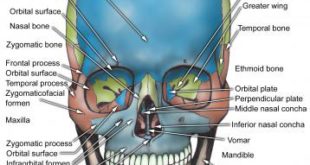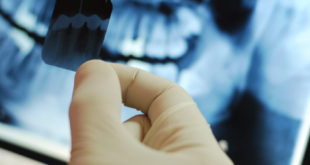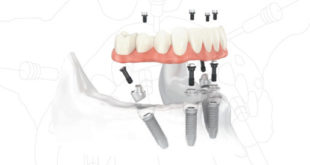The earlier perception towards growth was simple. We grew until we reached our twenties. After that, vertical growth stopped but horizontal or weight increases or decreases continued. Based on this premise, dentists used static oral and cranial landmarks to place dental implants for edentulous patients. As growth was considered over, there was no need to worry about displacement or wandering of the implants.
That was then. Now, it is an established fact that craniofacial growth continues all through life. In fact, the speed of growth decreases but constant modifications occurs in the bone structure of both men and women. Furthermore, the actual craniofacial and jaw changes which take place differ from men to women. This growth will affect implant placement as implants fuse or anklyose into bone when they are placed. They are incapable of wandering or adjusting to growth changes. Over time, these growth changes will result in distinct esthetic and functional problems with the implants. This problem becomes particularly apparent when a single implant is placed in conjunction with living teeth.
Common Craniofacial Changes Seen Due To Age
- Anterior face height increased with the most increase happening in the lower dentoalveolar area.
- Females showed the most eruption in the maxillary anterior region and lower first molar region. They also demonstrated a palatal tip in the anterior region.
- Facial height increased by as much as 1.5mm and this led to an increase in vertical overlap. This was usually combined with a palatal tip in the anterior region for women.
- Mandibular angles also increased more in females as compared to males. Males showed an anterior rotation of the jaw while females showed a posterior rotation of the mandible.
- Maxillary molars of both genders demonstrated a mesial drift.
Common Implant Changes that Happen Due To Aging
- Occlusion changes are most common. Increased growth usually causes natural teeth to migrate. As a result, open contacts occur between natural teeth and implants. Loss of contact was more common in the mandible and increased with age.
- Incisal edge changes, gingival margin height, and loss of facial contour alignment were the most common changes seen in anterior implants.
- The labial plate also thinned out in anterior implants due to subtle growth changes and these changes were more common in women as compared to men.
In Conclusion
Ongoing subtle growth changes have now been proved in adult males and females. As a result, this will become visible in the form of open contacts and mesially drifting teeth. Some of the effects due to growth can be controlled by subtle treatment modifications but others may require complete replacement of the implant and abutment. Occlusion changes, in particular, will affect function and this may require dental intervention. Ideally, the patient will have to be informed about such age-related changes. Additional research will also be required before any conclusion can be reached regarding the influence of growth on implant placement.
The information on this post is meant for informational purposes only, and is not to be construed as medical advice. If you are experiencing a dental emergency, please contact a doctor immediately.
 Oded Bahat Research by Dr. Oded Bahat
Oded Bahat Research by Dr. Oded Bahat


